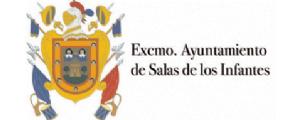DINOSAURS IN THE LAKE: LAS SEREAS 7 AND LA PEDRAJA
These 2 places are part of a megasite that extends along 5 km from Quintanilla de las Viñas to Mambrillas de Lara. More than a thousand imprints spread across 14 rocky outcrops are conserved in this site. Its age is of 144 million years, in the transition from the Jurassic to the Cretaceous: the most ancient dinosaur remains of the province of Burgos. Las Sereas 7 conserves 60 well-defined ichnites of sauropods (large vegetarian quadrupeds) and theropods (meat-eating dinosaurs). Here we must highlight 2 sauropod trackways having four “foot” digit impressions directed forward. This feature is unique within the planet’s known sauropod tracks. 123 ichnites of different types of dinosaurs have been listed in La Pedraja in a fairly small area. There are tracks of sauropods (the biggest and most abundant ones), theropods and maybe ornithopods (plant or vegetable eating dinosaurs). The statue placed in the site represents a sauropod dinosaur.
THE TROPICAL LAKE
Dinosaurs moved themselves along the muddy shores of a shallow and vast lake in subtropical weather. Algae grew in the shoreline where snails and other invertebrates lived. Dinosaurs probably came here to eat and drink or maybe they just strode by leaving the tracks of their footsteps imprinted.
144 years ago the seas and continents had a very different layout from that of today. The Iberian Peninsula wasn’t more than an island. A young Atlantic ocean grew to the West, and to the East was the Tetis sea, of which today the Mediterranean is its heir.







